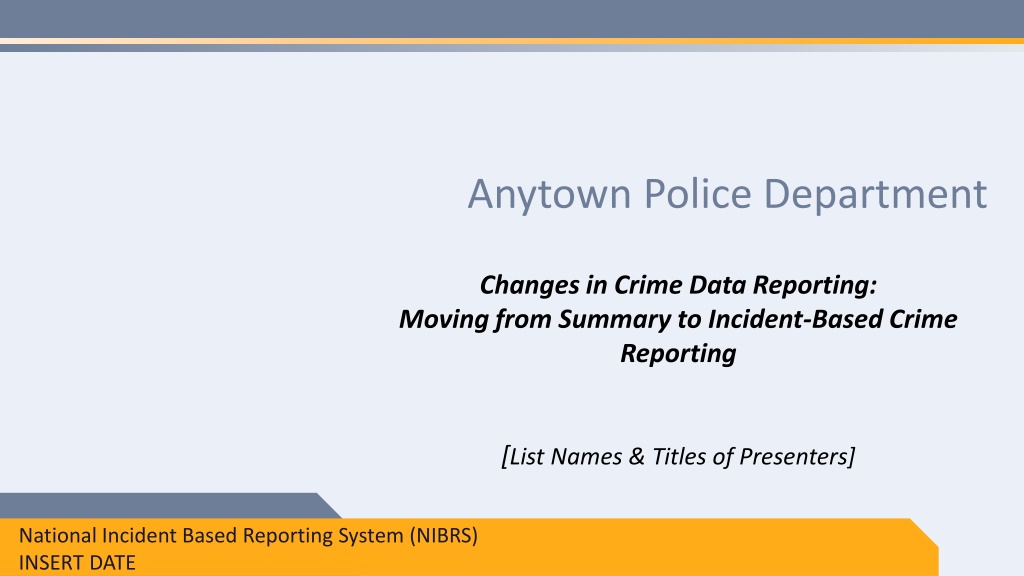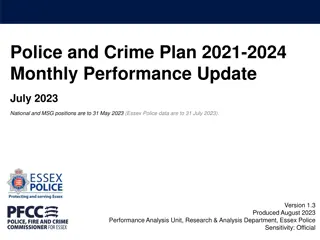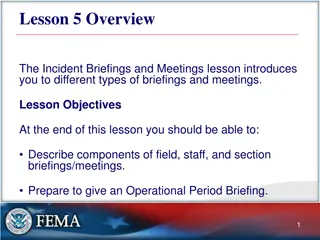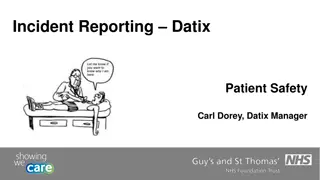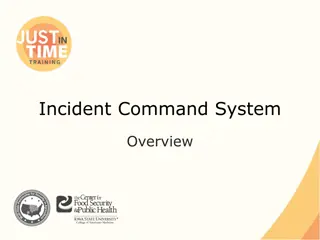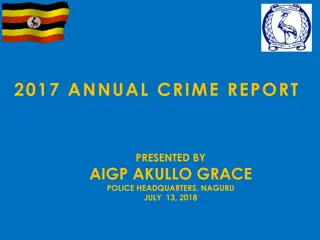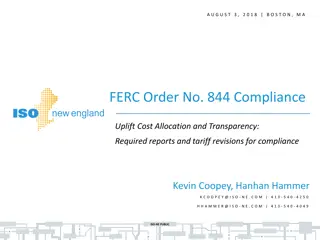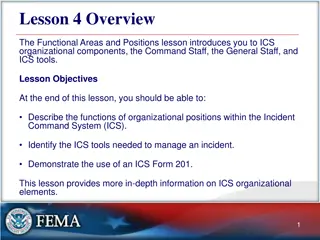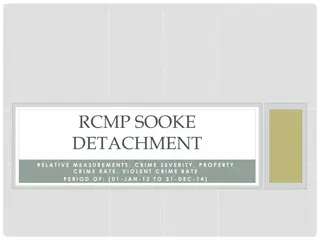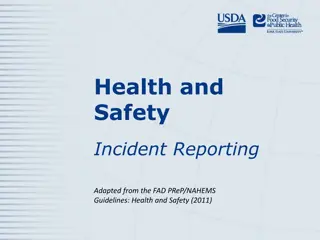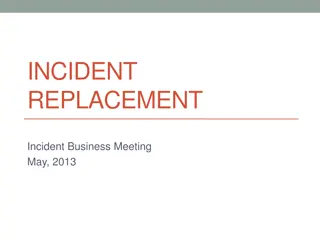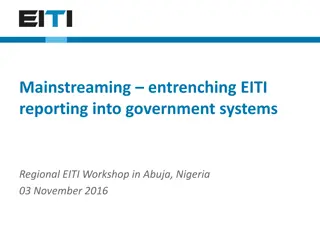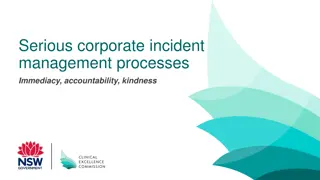Transitioning to Incident-Based Crime Reporting: Enhancing Transparency and Accountability
Anytown Police Department (APD) is leading the transition from Summary Reporting to Incident-Based Reporting through the National Incident-Based Reporting System (NIBRS). This change promotes transparency, provides detailed crime data to the public, and improves statewide and national crime statistics. The shift allows for reporting of individual crime incidents and moves away from the limitations of the Summary Reporting System (SRS) such as lack of contextual details. The update is crucial in today's information age where accurate crime data is necessary for informed public policy decisions.
Download Presentation

Please find below an Image/Link to download the presentation.
The content on the website is provided AS IS for your information and personal use only. It may not be sold, licensed, or shared on other websites without obtaining consent from the author. Download presentation by click this link. If you encounter any issues during the download, it is possible that the publisher has removed the file from their server.
E N D
Presentation Transcript
Anytown Police Department Changes in Crime Data Reporting: Moving from Summary to Incident-Based Crime Reporting [List Names & Titles of Presenters] National Incident Based Reporting System (NIBRS) INSERT DATE
APD leading the way to improve crime reporting Anytown Police Department (APD) is changing how it measures and reports crime data Beginning in MONTH YEAR, APD will report details about individual crime incidents to the National Incident-Based Reporting System (NIBRS) Transitioning to NIBRS: Enables and demonstrates greater transparency Allows the public better access to APD s detailed crime data Improves statewide and national crime data
Uniform Crime Report (UCR) Summary Reporting System (SRS) Uniform Crime Reporting began in 1929 Uses a common set of crime definitions and reporting rules Collects monthly summary counts of 10 crimes Murder, Rape, Robbery, Aggravated Assault, Burglary, Larceny/Theft, Motor Vehicle Theft, Arson, Cargo Theft, Human Trafficking Uses the Hierarchy Rule
Hierarchy Rule Hierarchy Rule - when more than one offense occurs within an incident, only the most serious crime is reported in the agency s monthly crime totals. Example: an incident involves a murder, rape, and robbery Offenses recorded in SRS Murder Offenses recorded in NIBRS Murder Rape Robbery 4
Limitations of SRS Does not provide details about the context of crimes (such as offender and victim demographics, victim-offender relationship, location and weapon) Only includes most serious offense when multiple offenses occur in an incident FBI will retire SRS program Jan 2021 STATE will no longer accept SRS submissions as of DATE (Update this bullet if this applies to your state or delete).
Need for improved crime statistics Policing is in the national spotlight and we lack data to address citizens concerns about policing and criminality We live in an information age: Improved technology allows for crime reporting beyond summary tally sheets Citizens expect accurate and timely crime data to support public policy decisions APD should be professional, transparent, and accountable
NIBRS Overview National Incident-Based Reporting System (NIBRS) Reflects law enforcement operations & recordkeeping practices Collects information on a comprehensive set of crimes Captures specific details about the nature and circumstances of crime, victim and offender characteristics, weapons used, etc. Provides data at national and state levels needed to better understand the nature of crime, criminality and victimization, which allows policymakers to make informed decisions
More Offense Types in NIBRS than SRS SRS Summary counts of 10 Part I offenses: Murder Rape Robbery Aggravated assault Burglary Motor vehicle theft Larceny Arson Human trafficking Cargo Theft NIBRS Detailed offense, victim, offender, property, and arrestee information for: 23 Group A crime categories made up of 49 offenses, and Arrest-only information for an additional 10 Group B offenses 8
How APD can use NIBRS data NIBRS data can be used to determine: Who is most likely to be a victim of certain type of crime? Who are primary offenders for specific type of crime? Where crime is occurring? How crime is distributed along an interstate or other boarder Are violent crimes more often committed by strangers? What kinds of crime are committed with firearms?
Benefits of NIBRS Provide context to better understand crime Address citizens concerns Allocate resources more effectively Standardized data structure for incident-level data Common platform for analytical comparisons across agencies and states Facilitates analysis of trends in victimization and offending that cross jurisdictional boundaries Evaluate policing strategies 10
Potential concerns about transitioning to NIBRS Below are examples of common concerns, update this slide with agency-specific concerns. Expense? Transitioning to electronic data submissions can be expensive; APD has applied for federal (or state) funding Additional work for officers? Increased staff workload since NIBRS requires reporting all offenses and to record incident details (e.g., victim and offender demographics and relationships, incident time and location, weapon, victim injuries, etc.) Perceived increase in crime? Will APD s crime volume increase due to the expanded number of offense categories in NIBRS and the elimination of the Hierarchy Rule 11
Will APDs crime rates increase? Do more offenses in NIBRS lead to higher crime rates? No. The 49 Group A offenses collected in NIBRS will not replace the 10 Part I offenses collected in SRS Will the elimination of the hierarchy rule cause crime rates to increase? Yes, slightly. Eliminating the hierarchy rule will result in an increase in the number of recorded offenses in multiple offense incidents since NIBRS counts up to 10 offenses per incident where SRS only includes the most serious offense 12
Multiple Offense Incidents: How Common Are They? Percentage of Incidents by Number of Offenses 1% 9% 90% 1 offense 2 offenses 3+ offenses 13
FBI Findings: Removal of the Hierarchy Rule 14
What APD could expect Based on data from agencies reporting NIBRS, transitioning from SRS to NIBRS could result in a very small increase in reported crime volume APD will (work with the NCS-X Team) develop a media campaign to educate the public on how NIBRS and SRS data should be compared and to explain why perceived increases in crime are likely artificial due to changes in how data are reported. 15
APD: NIBRS Transition Timeline INSERT TIMELINE OF KEY DATES. Consider including information on when your agency expects to transition internally, when you plan to start reporting incident-based data to the state UCR Program, and when you plan to communicate your transition to the public. 16
How NIBRS Benefits Anytown (update this slide so that it is specific to your experience) Part of state and national movement Responsive to citizens concerns with increased transparency and accountability Additional detail may help with making policy decisions and resource allocation Reporting all incidents gives a better overall picture of crime Crime statistics is one component of safety and health in our community 17
